Can You Ride a Motorcycle With a Car License
Getting a motorbike licence can seem overly complicated, it's quite different from getting a car licence.
To make things easier we've created a handy tool that lets you know what size bike you can ride and when. Click the button below to get started.
How to get a motorbike licence
There are two commonly known routes to getting a motorbike licence you can choose to take depending on your age and riding experience, but before you decide on either, you will have to consider the provisional driving licence.
Do I need a provisional driving licence to learn to ride?
Yes, you must have a provisional licence, this is the first thing you need to apply for before you take your CBT - you cannot begin learning to ride a motorbike without one.
Follow the link to find out how to apply for a provisional licence.
REMEMBER: You will need motorbike insurance too before you can legally ride a bike
Can I ride a moped with only a full driving licence?
Yes and no, the answer to this depends on when you passed your driving test.
If you passed your driving test before 1 February 2001 you can legally ride a moped (up to 50cc) with no L plates, without taking a CBT course or the full moped test.
In this instance you will, however, need to take a CBT if you want to ride anything larger than a 50cc moped.
Anyone who passed their driving test after 1 February 2001 will have to complete their CBT before being able to legally ride a moped or motorbike.
You don't have to take CBT if you:
You will also not need to complete your CBT if you want to ride a motorcycle and have a full moped licence from passing a moped test since 1 December 1990 or if you live and ride on some offshore islands.
Want more useful content like this sent straight to your inbox?
Subscribe here
The direct access route
The direct access route is when a non-rider decides to get a licence based on what their age group permits them to with no previous riding experience.
This route entitles you to an:
- AM licence (allowing you to ride a 50cc bike) if you are 16 or over
- A1 licence (allowing you to ride a 125cc bike) if you are 17 or over
- A2 licence (limiting you to a bike up to 35kw) if you are 19 and over
- A licence (allowing you to ride any bike of any sized engine) if you are 24 or over.
The progressive route
The progressive route, on the other hand, allows you to progress up through the bike licences gaining riding experience along the way to attain your full A licence at a younger age.
If you begin riding at 16 you can work your way through the categories consecutively which will eventually mean a rider can attain a full A motorcycle when they are 21 as opposed to waiting until they are 24.
Providing you adhere to the right number of years' experience, and your theory test certificate is valid, this route entitles you to an:
- AM licence (allowing you to ride a 50cc bike) if you are 16 or over
- A1 licence (allowing you to ride a 125cc bike) if you are 17 or over
- A2 licence (limiting you to a maximum bhp of 47) if you are 19 and over
- A licence (allowing you to ride any bike of any sized engine) if you are 21 and have held your A2 licence for two years or more
The other benefit of the progressive route is if you progress through the licencing system, gaining the appropriate number of years' experience with each licence, you will not need to retake your motorcycle theory test.
GET COVERED: Make sure you have motorbike breakdown cover sorted for when you pass
The licences
There are a number of different licences you can get each of which entitle you to ride differing powers of bike. Here we explain what they all mean, what they let you ride and how you can get one.
Compulsory Basic Training (CBT)
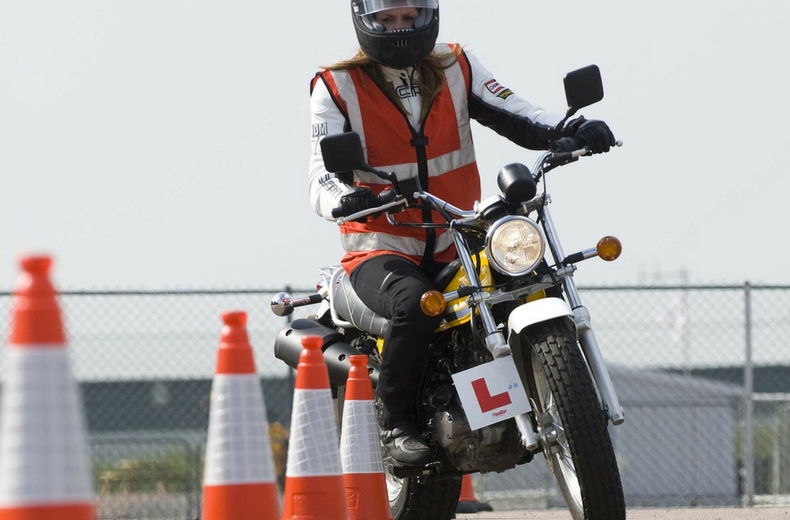
You cannot legally ride a bike on the road without completing you Compulsory Basic Training (CBT). So before attempting to attain any of the other licences you must first complete this - hence the word compulsory.
What is the CBT?
The CBT consists is a five-element training course that you must complete to be allowed to legally ride a bike.
It is a course, not a test. However, if your trainer feels you are not a sufficient enough rider and may be a danger to yourself or others they are entitled to make you complete more basic training before you get your certificate.
What does the CBT involve and how much is it?
The CBT has five elements
includes on-site and off-site training, which must total at least two hours of on-road riding.
On-site will be training in a safe controlled environment that is closed off to other road traffic. This time will be used to allow you to get used to riding a bike and practise manoeuvre using cones.
The off-site training takes place on public roads where you would need to demonstrate to your instructor that you can ride safely with other road users
Your CBT will cost around £120.
What can I ride with my CBT?
Completing the CBT earns the rider a DL196 certificate, this offers different privileges at different ages.
Taking your CBT also allows you to begin the process of attaining a bike licence.
What will you need to complete your CBT?
You will need to have your provisional driving licence before you start.
It is also worth investing in a helmet and the proper protective riding gear too, including: a jacket, trousers and gloves.
The test centre will normally be able to provide you with this but if you're going to start riding you will need your own equipment anyway.
Does your CBT expire?
Your CBT will expire after two years. This means if you do not graduate to a motorbike licence within two years of taking your CBT you will have to take it again to legally ride on the roads.
DID YOU KNOW? - The RAC's vehicle check service gives a detailed history of whether a motorbike has been been stolen, written off or is still on finance, allowing you to make the right decision on a used bike before buying. The service also provides a personalised valuation that gives buyers the opportunity to find out if they are getting a good deal or not.
The AM licence
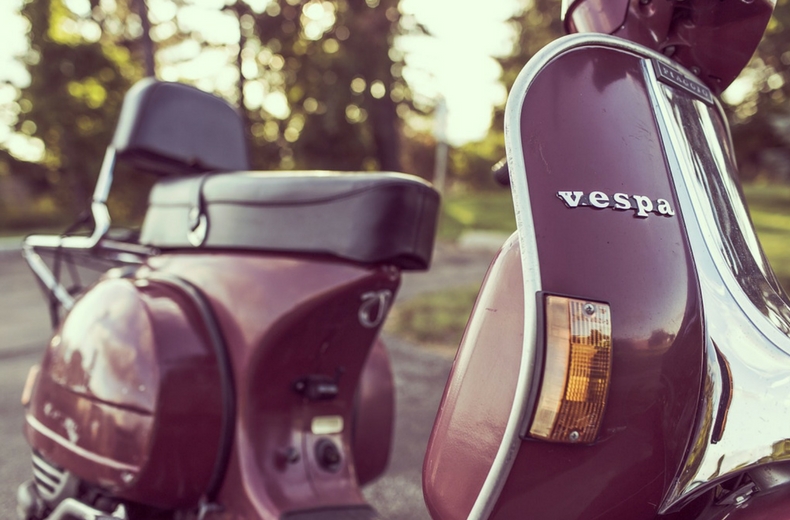
What can I ride with a full AM licence?
An AM licence allows riders aged 16 and over to:
- Ride a mopeds with speed range of 25 km/h to 45 km/h (rough top speed of 30mph)
- Ride small three-wheelers (up to 50 cc and below 4 kW)
- Ride light quadricycles (weighing under 350 kg, top speed 45 km/h)
- Ride without L-plates on
- Carry a pillion passenger
How do I get an AM licence?
You will need to:
- Be at least 16 years old
- Have a valid CBT certificate
- Pass the motorbike theory test
- Pass the two-module motorbike practical test
This test has to be carried out on a 50cc motorcycle or moped.
The A1 licence
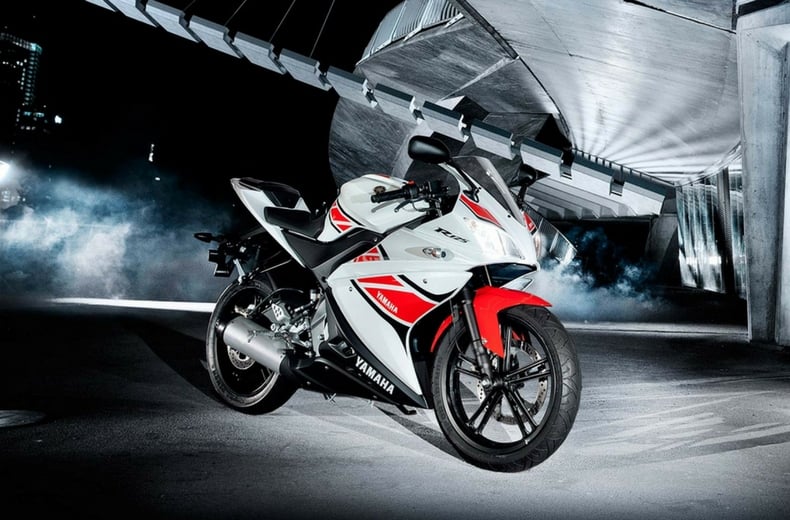
What can I ride with a full A1 licence?
An A1 licence allows riders aged 17 and over to:
- Ride a light motorcycle up to 11 kW (and a power-to-weight ratio not more than 0.1kW per kg) and 125 cc (rough top speed of 60mph)
- Ride without L-plates
- Carry a pillion passenger
- Ride on motorways
This is an exciting category: the choice of 125cc motorcycles is enormous and companies such as Honda and Yamaha sell convincing 125cc bikes that look like junior sports bikes.
Here you can see our recommendations of the best beginner bikes to kick start your motorbike journey.
How do I get an A1 licence?
You will need to:
- Be at least 17 years old
- Have a valid CBT certificate
- Pass the motorcycle theory test
- Pass the two-module motorbike practical test outlined below
This test must be carried out on a 120 to 125cc motorcycle capable of 55mph or above that produces up to 11kW of engine power.
The A2 licence
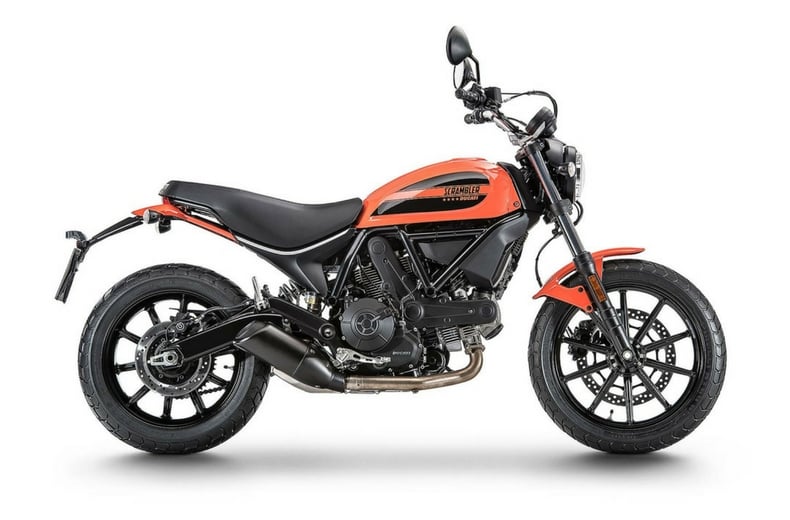
What can I ride with a full A2 licence?
An A2 licence allows riders aged 19 and over to:
- Ride a bike that produces no more than 35 kW or 47bhp (these are normally advertised as A2 bikes in dealer showrooms)
- Ride without L-plates
- Carry a pillion passenger
- Ride on motorways
How do I get an A2 licence?
The direct access route
If you are aged 19 or over, you will need to pass the theory test and two-module practical test outlined below - providing you have an in date CBT.
This test must be taken on a minimum of a 395cc motorcycle with a power output of between 20 kW (27bhp) and 35 kW (47bhp).
The progressive route
If you have held a full A1 licence for at least two years then you can upgrade to an A2 licence by passing the two-part practical test, without taking your theory again. If you are 19 and have held a full A1 licence for less than two years, you will have to take your practical test again.
This test must be taken on a minimum of a 395cc motorcycle with a power output of between 20 kW (27bhp) and 35 kW (47bhp).
REMEMBER -that the maximum power to weight ratio is not allowed to be more than 0.2kwh per kg, also any bike that produces more than 70kwh or 94bhp in standard factory issue cannot be restricted down to 35kwh.
The A licence
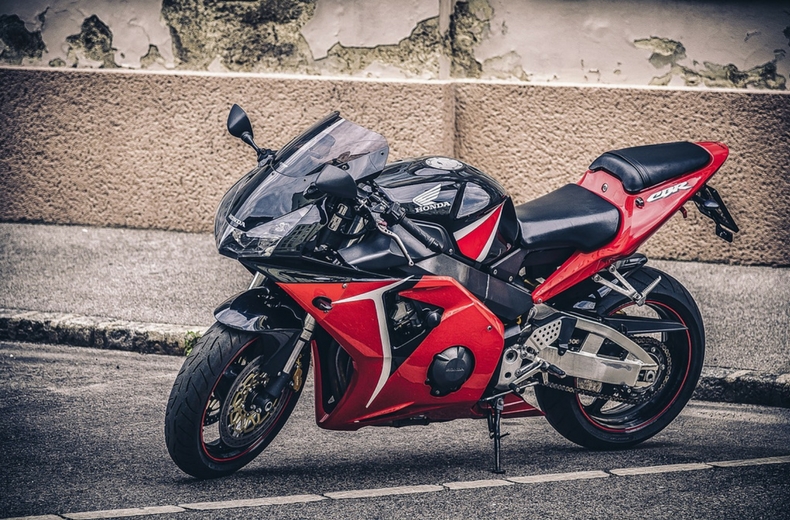
What can I ride with a full A licence?
The A licence entitles you to ride any machine of any cc and unlimited power, carry a pillion passenger and ride on motorways.
How do I get an A licence?
The direct access route
If you are aged 24 or over, you will need to pass the theory test and two-module practical test outlined below - providing you have an in date CBT.
This test must be carried out on a motorcycle that produces at least 54bhp or 40kw and is over 595cc, however, it is not advisable to go straight into the A licence without any previous riding experience.
REMEMBER -if you want to practise for your test on this size bike, you can only do so if accompanied by a professionally qualified D.S.A. approved motorcycle instructor.
Progressive route
If you have held an A2 licence for at least two years you upgrade to your full A licence by passing the two-part practical test, without taking your theory again.
This means you can take the test when you are 21 instead of 24, as with the direct access route.
This test must be carried out on a motorcycle that produces at least 54bhp or 40kw and is over 595cc.
The tests
The theory test
The theory test is a crucial part of getting your motorbike licence, it will teach you valuable knowledge that you will carry with you every time you get on your bike. Here we explain the process of taking and passing your theory test.
Do I need to take a motorbike theory test if I have a full UK driver's licence?
Yes, you always need to take and pass a motorbike theory test before taking the motorbike practical test, irrespective of whether you have a full driving licence or not.
When can I take the theory test?
If you are planning to ride a 50cc moped when you are 16 you can take the theory test from your 16th birthday onwards.
However, if you are planning to learn to ride a motorbike you can take the test from your 17th birthday onwards.
You do not have to take your theory test before you have completed the CBT, but you can if you wish to.
Where can I take it and what do I need to take with me?
When you book your practical test one of the steps you will be taken through will prompt you to type in your postcode and will show you the nearest test centres to you.
You must take your UK photocard driving licence with you to your test. If you do not have it with you, you will not be able to take the test - no exceptions.
If you have a licence from Northern Ireland you will need to bring the photocard and paper counterpart licence and if you have a paper licence you will need to bring a valid passport as well as your paper licence.
What does the test consist of?
The theory test is similar to that for car drivers as it involves two parts to the test:
- A multiple-choice section - 50 multiple-choice questions to answer in 57 minutes
- A hazard perception section - a video test about spotting hazards on the road.
You book and take them as a single test. You have to pass both parts to pass the test.
How do I book my theory test and how much does it cost?
You can book your theory test online by visiting gov.uk's page on theory test booking.
It costs £23 to take your motorbike theory test, you will have to pay by direct debit card and will be prompted to do so when you book.
Theory test revision and practise
There are a number of resources you can use to practise for your motorbike theory test, from apps to mocks to paid for media.
We recommend the following resource:
Take a mock motorcycle theory test
How do I change, check or rebook my test?
The Government portal offers the chance to change the date of your theory test after you've booked it, check your appointment details if you've lost your booking confirmation and rebook your test should you fail, with ease.
When rebooking your test you will need to choose a date at least three working days away.
What are the theory test pass marks?
You will need to pass both parts of the tests to pass your theory test.
You will find out your result immediately after your test. If you pass you will be given a letter with a pass certificate number at the test centre.
You need this when you book and take your motorcycle test.
REMEMBER: This pass certificate number will last for only two years, meaning you will need to pass both modules of the motorcycle practical test in that time, otherwise you'll have to take the theory test again.
The practical test
Is the practical test the same for every licence?
The practical test is the same for each category, the only difference is the size of the bike you complete the test on. The AM test has a lower speed requirement but follows the same format.
- A1 riders must carry out the test on a 120 to 125cc motorcycle capable of 55mph or above that produces up to 11kW of engine power
- A2 riders must carry out the test on a minimum of a 395cc motorcycle with a power output of between 25 kW (33bhp) and 35 kW (47bhp)
- A riders must carry out the test on a motorcycle that produces at least 54bhp or 40kw and is over 595cc
What does the test consist of?
The practical test is a two-part test, both of which you have to pass to attain your licence. These parts are known as module one and module two.
Module one
This section comprises a 20-minute off-road driving module which tests riders on the following skills:
- Wheeling the moped or motorcycle and using the stand
- Riding a slalom and figure of 8
- A slow ride
- A U-turn
- Cornering and a controlled stop
- Cornering and an emergency stop (minimum speed of 19mph for mopeds and 31mph for motorcycles)
- Cornering and hazard avoidance (minimum speed of 19mph for mopeds and 31mph for motorcycles)
Module two
The second part of the practical test, module two, is a 40-minute on-road test that includes road riding, independent riding and motorcycle safety check questions.
You have to pass module one before attempting module two.
Where can I take the test and what do I need to take with me?
When you book your practical test one of the steps you will be taken through will prompt you to type in your postcode and will show you the nearest test centres to you.
On the day of the test you must take:
- Your UK photocard driving licence
- Your theory test pass certificate
- A moped or motorbike
- Your compulsory basic training (CBT) certificate - unless you're taking the test to upgrade your full motorcycle licence
- Your module 1 test pass certificate - if you're taking your module 2 test
Your test will be cancelled and you won't get your money back if you don't take the right things with you.
On the day of your test you must wear:
- A motorcycle helmet that meets British safety standards (unless you're Sikh and wearing a turban)
- Motorcycle boots or other sturdy footwear that supports and protects your ankles
- Textile or leather motorcycle trousers or heavy denim trousers
- A textile or leather motorcycle jacket or a heavy denim jacket with several layers underneath
- Motorcycle gloves
How do I book the test and how much does it cost?
You can book the riding tests separately or at the same time, however, you must pass module one before attempting module two.
To book visit the Government's portal on practical test booking.
Module one costs: £15.50
Module two costs: £75
How many lessons should I have before taking the test?
There is no minimum legal requirement for the amount of lessons you have to have before taking the motorbike practical tests.
However, it is recommended to have a couple of days tuition prior to attempting your full A licence if you are an inexperienced rider taking the direct access route.
How do I change, check or rebook my test?
Change the date of a test
Check the details of your test
What are the pass marks?
Both modules have separate passing criteria.
Module 1
You'll find out if you've passed module 1 at the end of the test.
During the module your examiner will note:
- Dangerous faults - these involve actual danger to you, the examiner, the public or property
- Serious faults - these are potentially dangerous
- Riding faults - these aren't potentially dangerous, but could become serious if you keep making the same mistake
You will fail module one if your examiner observes:
- One dangerous fault (a 'major')
- More than five riding faults ('minors')
If you pass
The examiner will tell you what faults you made, if any and give you a pass certificate, which you will need to take to the module 2 test.
If you're upgrading your licence through 'progressive access', you must pass module 2 within six months of passing module one otherwise you will have to pass module 1 again.
If you fail
You'll have to book another module 1 test and pay again. You have to choose a date at least three working days away.
If you've already booked the module 2 test you might need to change the date, since you must pass module 1 before you can take module 2.
You'll lose your fee if you don't give 3 full days' notice to cancel your module 2 test. Sundays and public holidays don't count as working days.
Module 2
You'll be told if you've passed module 2 at the end of the test.
During the module your examiner will note:
- Dangerous faults - these involve actual danger to you, the examiner, the public or property
- Serious faults - these are potentially dangerous
- Riding faults - these aren't potentially dangerous, but could become serious if you keep making the same mistake
You will fail module one if your examiner observes:
- One serious or dangerous fault (a 'major')
- More than 10 riding faults ('minors')
If you pass
The examiner will tell you what faults you made, if any, give you a pass certificate and ask if you want your full licence to be sent to you automatically - if you do, you will have to give the examiner your provisional licence.
If you fail
You'll have to book another module 2 test and pay again. You have to choose a date at least 10 working days after your first attempt.
10 motorbike test tips
Passing the practical motorcycle test requires plenty of practice with your instructor and the mastering of several techniques that you'll be assessed on during the 40-50 minute ride.
A good riding school will prepare you fully for this, but there are still tips to remember that will help.
Here we run through 10 things that will help you pass your motorcycle test.
Can You Ride a Motorcycle With a Car License
Source: https://www.rac.co.uk/drive/advice/motorbikes/getting-a-motorbike-licence/
0 Response to "Can You Ride a Motorcycle With a Car License"
Post a Comment